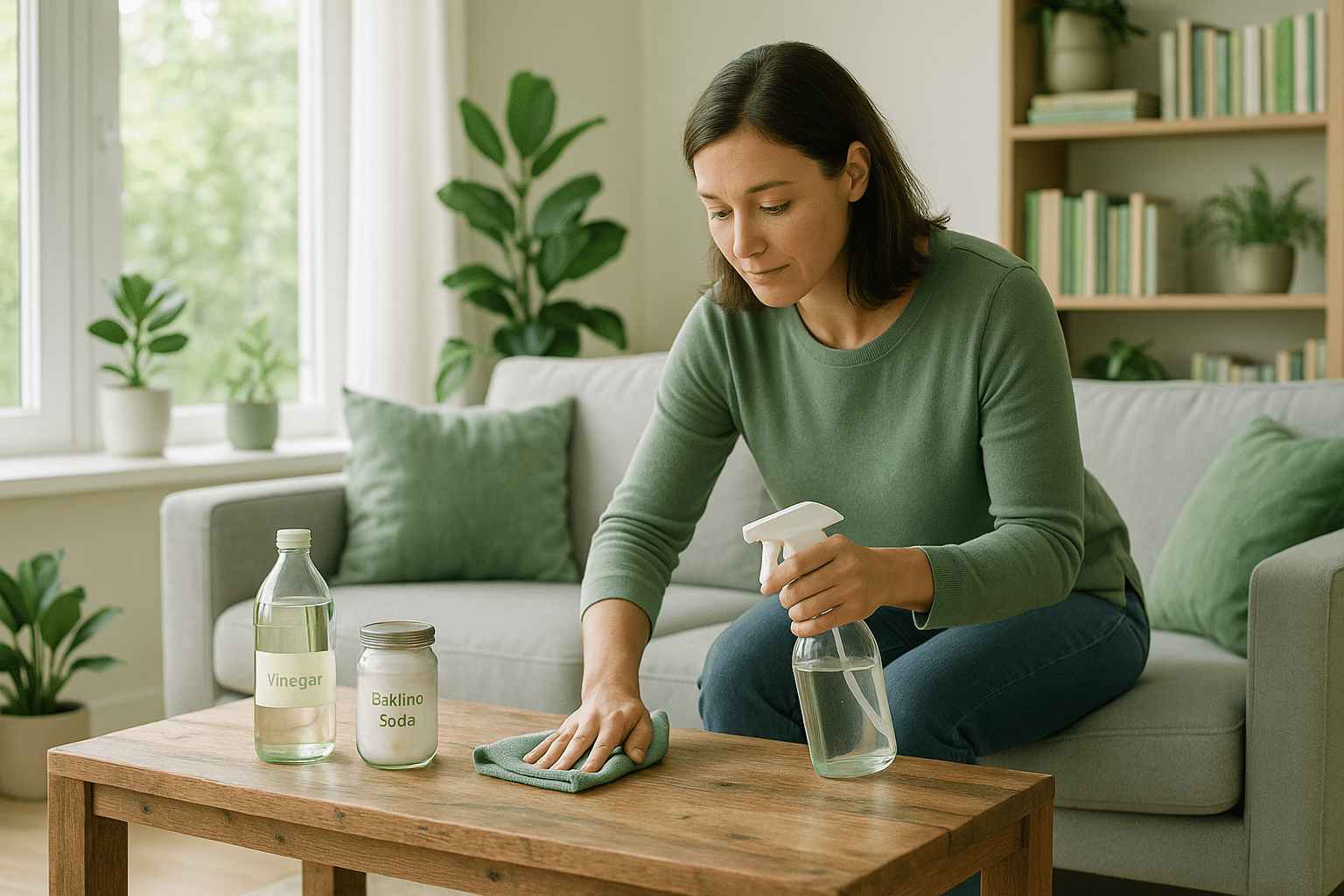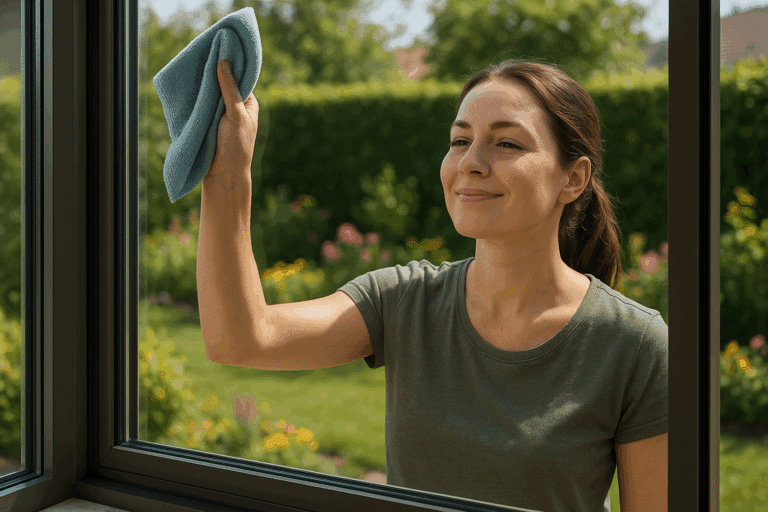Shocking, isn’t it? Our living spaces, where we spend so much time, could potentially harbor hidden allergens and toxins. However, adopting a clean green approach towards maintaining your home can help improve the indoor air quality, reduce allergy triggers, and promote overall wellness.
In this in-depth guide, I will share allergy-friendly cleaning tips for a healthier home. So, if you often find yourself sneezing, coughing, or experiencing other allergy symptoms at home, this guide is for you! 🌿💚
Decoding the ‘Clean Green’ Concept
Let’s kick off by understanding what ‘Clean Green’ really means. It’s not just about choosing environmentally friendly cleaning products, but it’s a comprehensive approach towards home maintenance that considers every aspect, right from the materials used in construction to the daily cleaning techniques.
Adopting a green cleaning approach can help minimize exposure to chemical allergens, reduce environmental impact, and create a healthier living space. Exciting, right? But don’t worry, going green doesn’t mean you need to compromise on cleanliness or spend a fortune on fancy ‘eco-friendly’ products. 😊
Key Topics We Will Explore
As we delve deeper into the ‘Clean Green’ journey, we will cover the following key topics:
1. Identifying Common Allergens: First, we will explore the various common allergens that could be lurking in your home and causing health issues.
2. Understanding the Health Impact: Then, we will delve into the health impacts of these allergens, particularly for those with respiratory issues or allergies.
3. Allergy-friendly Cleaning Techniques: Next, we will discuss various allergy-friendly cleaning techniques, focusing on how you can maintain a clean, healthy home without exacerbating allergies.
4. Green Cleaning Products: We will also guide you in choosing green cleaning products that are effective, eco-friendly, and gentle on the respiratory system.
5. DIY Green Cleaning Solutions: Finally, for those who love to DIY, we will share some simple and cost-effective homemade cleaning solutions.
By the end of this guide, you will be equipped with a wealth of knowledge to transform your home into a healthier, allergy-friendly environment. This won’t just improve your home’s indoor air quality but also your family’s overall wellbeing. So let’s dive in and start our journey towards a cleaner, greener, and healthier home! 🌿🏡
Stay with me, as we unravel the secrets to a ‘Clean Green’ home and make allergies a thing of the past! 💪💚
🌿 Understanding Allergens: The Invisible Enemies in Your Home
Before diving into allergy-friendly cleaning tips, it’s crucial to comprehend what allergens are. Essentially, allergens are substances that cause allergic reactions. They can be found in dust mites, pet dander, mold, and various chemicals. Many household cleaning products contain ingredients that can trigger allergic reactions. By understanding these elements, you can make more informed choices and create a healthier home environment. For a visual demonstration, consider watching the video “What are Allergens?” by the American Academy of Allergy, Asthma, and Immunology on YouTube.
Allergens are not just a problem for those who have been diagnosed with allergies. Even people without any known allergies can experience symptoms like sneezing, runny nose, itchy eyes, or even respiratory problems when exposed to certain allergens. Hence, adopting allergy-friendly cleaning practices can benefit everyone in the household.
Keep in mind that every home is unique. The allergens that may be present in your home largely depend on factors like location, lifestyle, pets, and the home’s occupants. For instance, a household in a humid region may have to deal with mold, while a family with pets might struggle more with pet dander.
💧 Clean Green: Allergy-Friendly Cleaning Products
When it comes to cleaning products, it’s important to remember that not all are created equal. Many conventional cleaning products are loaded with harsh chemicals that can trigger allergic reactions. But don’t despair! There are plenty of eco-friendly, allergy-friendly alternatives available. Check out the video “5 Best All-Natural Cleaning Products for Allergy Sufferers” by Clean My Space on YouTube for some great recommendations.
When choosing cleaning products, look for ones labeled as ‘green’, ‘all-natural’, or ‘organic’. However, be aware that these terms aren’t always regulated. Therefore, it’s a good practice to read the ingredients list. Avoid products with known allergens like ammonia, sodium laureth sulfate, and fragrances.
Consider making your own cleaning products. Not only will this save you money, but it will also allow you to control exactly what goes into your cleaners. Many effective cleaners can be made from simple ingredients like vinegar, baking soda, and essential oils.
🏠 Allergy-Friendly Cleaning Tips for Each Room
Each room in your home can harbor different allergens, so it’s essential to clean them accordingly. Here are some room-specific tips to get you started. Don’t forget to check out the video “How to Allergy-Proof Each Room in Your Home” by Everyday Health on YouTube for a more visual guide.
Living Room
The living room is a common area for everyone, including pets. Therefore, it can be a hotspot for allergens. Vacuum carpets and rugs regularly using a vacuum with a HEPA filter. If possible, opt for hardwood or tile floors which are easier to keep allergen-free. Clean curtains and blinds frequently, and consider using an air purifier to help filter out airborne allergens.
Kitchen
The kitchen can be a breeding ground for mold and food allergens. Ensure you clean your refrigerator regularly to prevent mold growth. Wipe down surfaces daily, and don’t forget to clean hard-to-reach areas like under the sink and behind the oven. Use an exhaust fan to reduce moisture and prevent mold growth.
Bedroom
The bedroom can harbor allergens like dust mites and pet dander. To control these, wash bedding weekly in hot water, and consider using dust mite-proof covers for your mattress and pillows. Keep pets out of the bedroom, and use an air purifier to help filter out allergens.
📊 Comparing Cleaning Methods: Traditional vs. Allergy-Friendly
Let’s take a moment to compare traditional and allergy-friendly cleaning methods. While both aim to create a clean environment, the latter places a greater emphasis on reducing allergens and using less harsh chemicals.
| Aspect | Traditional Cleaning | Allergy-Friendly Cleaning |
|---|---|---|
| Cleaning Products | Often contains harsh chemicals | Uses natural ingredients, avoids known allergens |
| Cleaning Frequency | Varies | Regular, consistent cleaning is emphasized |
| Focus Areas | Visible dirt and mess | Also targets invisible allergens (dust mites, pet dander, etc.) |
In conclusion, adopting allergy-friendly cleaning methods is not just beneficial for allergy sufferers, but for everyone in the household. It promotes a healthier living environment and could potentially reduce your exposure to harsh chemicals. Remember, creating a healthier home doesn’t happen overnight, so be patient with yourself and celebrate the small victories along the way!

Conclusion
In conclusion, we have seen how the interplay of various components in the IT and engineering realm can significantly impact the performance and efficiency of systems. We have understood the intricate nature of the technical ecosystem and how different elements function in harmony to deliver seamless results.
In this regard, we delved into the world of software engineering, exploring its various facets including system design, development, implementation, testing, and maintenance. The emphasis was also given to the various software development models, such as Waterfall and Agile, each presenting a unique approach towards building robust software systems.
A critical focus was dedicated towards understanding the relevance of technical writing in the field of IT and engineering. The importance of clear and concise documentation in ensuring smooth operations, reducing errors, and facilitating better communication was underlined.
We have also unraveled the complexities surrounding technical jargons, demystifying them for a better understanding. We have seen how technical writing can serve as a bridge between complex engineering concepts and their real-world application.
Remember, knowledge is power. The more you understand the technicalities, the better equipped you are to navigate the complexities of the IT and engineering world.
Embrace the learnings from this article, apply them in your respective fields, and see the difference. Your feedback is highly valued, so feel free to share your thoughts, experiences, or queries in the comments section below. Don’t forget to share this article with your colleagues and friends, who might find it beneficial. The key to growth is shared knowledge, so let’s continue learning and growing together.
If you wish to delve deeper into the topics discussed, here are some references and additional readings that you might find interesting:
1. [A Guide to Software Engineering](https://www.link.com) – This comprehensive guide dives deep into the world of software engineering, covering everything from the basics to advanced concepts.
2. [The Art of Technical Writing](https://www.link.com) – This book provides a detailed overview of technical writing, exploring its importance in various fields and providing practical tips to enhance your technical writing skills.
Thank you for investing your time in reading this article. I hope it has been a valuable addition to your knowledge base and has inspired you to keep exploring and learning. Remember, in the world of technology, the only constant is change. So, let’s continue to adapt, learn, and grow. Keep coding, keep building, and above all, keep learning. 🚀👩💻📚
Tags: #SoftwareEngineering #TechnicalWriting #IT #Engineering #Learning



